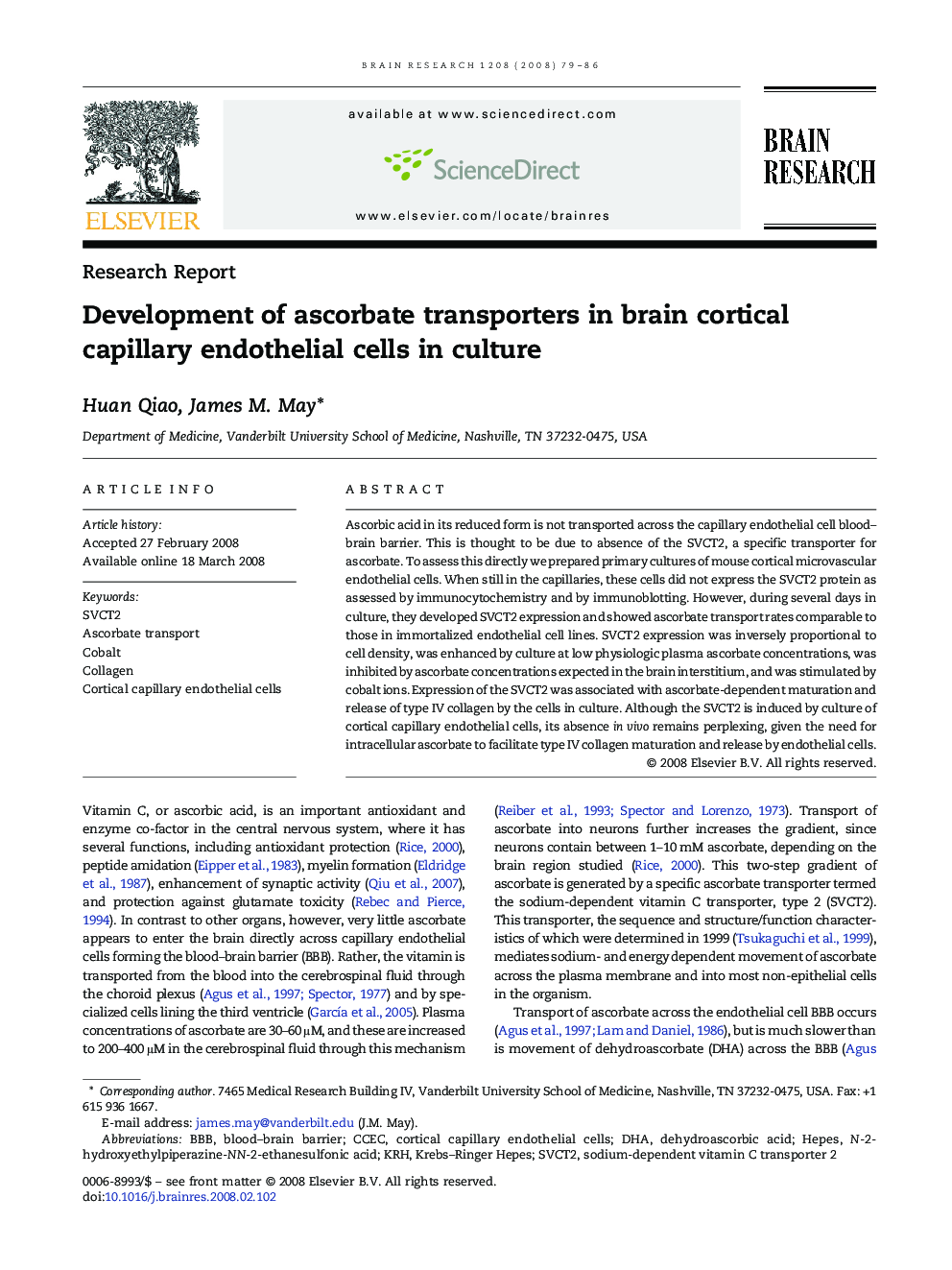| Article ID | Journal | Published Year | Pages | File Type |
|---|---|---|---|---|
| 4329775 | Brain Research | 2008 | 8 Pages |
Ascorbic acid in its reduced form is not transported across the capillary endothelial cell blood–brain barrier. This is thought to be due to absence of the SVCT2, a specific transporter for ascorbate. To assess this directly we prepared primary cultures of mouse cortical microvascular endothelial cells. When still in the capillaries, these cells did not express the SVCT2 protein as assessed by immunocytochemistry and by immunoblotting. However, during several days in culture, they developed SVCT2 expression and showed ascorbate transport rates comparable to those in immortalized endothelial cell lines. SVCT2 expression was inversely proportional to cell density, was enhanced by culture at low physiologic plasma ascorbate concentrations, was inhibited by ascorbate concentrations expected in the brain interstitium, and was stimulated by cobalt ions. Expression of the SVCT2 was associated with ascorbate-dependent maturation and release of type IV collagen by the cells in culture. Although the SVCT2 is induced by culture of cortical capillary endothelial cells, its absence in vivo remains perplexing, given the need for intracellular ascorbate to facilitate type IV collagen maturation and release by endothelial cells.
